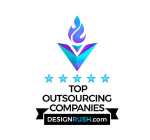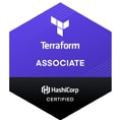Certainly, the feature list generates the biggest part of smartphone app development costs. Project duration depends on the number of features.
IIn order to compose the feature list, app owners need to know what they want their users to do in the app, i.e., what problems the app solves. Together with the BA and/or PM, they clarify what will be delivered. They plan the features users get in the app to solve tasks. Then, implementation is planned.
Apart from the app itself, the scope of work on features includes an ‘invisible’ part, back-end development. Most heavy calculations are done in the back-end. Back-end development can add significantly to the costs of mobile app development.
The list of possible mobile app features is almost infinite. This app price calculator reflects the most common features.
Note: What is the biggest problem with both Android mobile app development and iOS mobile app development? It is impossible to guarantee 100% success on ALL devices. Some features might not work on some smartphone models due to smartphone limitations. The development team can ensure features work fast on most popular smartphones.
Multi-language support
An international app can target several languages at once. Multi-language support makes it possible to target a wider audience and win a loyal audience among speakers of other languages.
To make this happen, the app must be correctly localized. The app must be tested thoroughly to ensure all descriptions correspond to app screen. No mess ups are tolerated.
The language settings can be determined automatically based on user smartphone settings. Also, users need functionality to change their preferences manually in the app in case a user’s native language is not included in the list.
Offline mode
The best thing about mobile apps they can work without a stable Internet connection. Offline mode makes this possible. When in offline mode, the app saves data in smartphone storage. All changes can be transmitted as soon as a stable Internet connection is restored.
For collaborative apps, it is vital to set strict rules for offline mode and develop instruments for those rules. An update from a team member who worked offline should not ruin the work of the rest of the team.
Offline mode adds to the scope of work on a project.
Third-party API integration
Third-party services substantially shorten mobile app development time. As a result, app owners get an app of the same quality faster—for less.
Mobile apps benefit from:
- Features of other services (e.g., secure payments)
- custom algorithms for which other competitors have not opted yet (e.g., autoroute configurator)
- essential information available with integration of other services (e.g., weather forecast)
The downside: be prepared for costs of regular subscriptions.
Newsfeed
As an engagement element, this is a must-have feature for social media-like apps or those that share social network elements.
A newsfeed makes it possible to keep track of other users’ activities, share thoughts and achievements, receive news and commentaries, and more. To accomplish this, mobile app developers must arrange a perfect graph of social connections to engage users in the newsfeed.
A newsfeed can be also used as a motivation factor. Users spend more time in the app with a well-designed newsfeed.
Categories and search
When users can choose among several options, search and sort feature helps them make an informed decision faster. Especially when users can compare characteristics of chosen items directly after they have sorted the needed elements.
Search and sort are usually performed in the app back end. Users see the result of an operation on their screens. Complexity of mobile app development depends on the number of search parameters.
When combined with a recommendation system, search and sort can be a killer feature of a mobile app where users must refine large amounts of offers e.g., marketplace apps, media apps, on-demand service apps, etc.
Video player
A wide range of apps benefit from a built-in video player. Many users prefer to watch a video rather than read a description. Videos help do everything: sell items, explain learning material, transmit news and opinions, and more. Social networks that let users stream their own video content are trending very well.
Video players can adjust quality of the video depending on the Internet connection and screen type. Also, a 360-degree-video player can provide users with a VR experience.
Audio player
It is much easier to add an audio player into an app than to add a video player. Although it might seem to be a less popular option, some app categories need an audio player. If you plan to transmit any voice content (e.g., podcasts, music, audio books, etc.) via your app, an audio player is a must-have feature. Audio players can be built using native app development instruments and also using frameworks (this works for hybrid apps).
Photo sharing options
Decide on where users are going to share photos (via chat message, direct link, sharing on social networks). Usually, users benefit the most when several options are available. Will the photo disappear with time? Can the user limit access? Can they apply filters? These aspects affect complexity to the app development.
Photo sharing apps can crop photos or decrease quality in order to economize traffic and decrease server load, too.
Apps with built-in photo sharing require enhanced security in order to prevent leaks of personal data.
Social sharing
This feature is key when an app is built around a community. A secure social app helps people stay in touch with each other within a certain community. Social sharing is an important part of communication between users. It encourages people to express their opinions, inspire, and keep motivation high. Apart from social networks, social sharing is crucial for fitness apps, eLearning, and other apps where long-term motivation is the key to user’s success.
Social sharing is based on a social graph. This makes it possible for users to find like minded people.
Calendar and events
Users can hardly be amazed by a calendar app in 2020. However, this feature will be critical for every app where user activities stick to certain dates. This can be:
- planners
- activity trackers
- online appointment apps
- rental and delivery apps
- logistics solutions
and more.
Users need a calendar to:
- schedule upcoming events
- receive timely alerts
- set up notifications and reminders
Developers can build a calendar using existing modules. Also, they can integrate a third-party calendar. This is important for synchronization. For example, app calendar might require integration with other users’ Google calendars for seamless UX.
Geolocation and navigation
This feature lets users point their coordinates on a map and find their way to a chosen destination. Crucial for navigation apps. Also, on-demand, Uber-like apps cannot exist without geolocation. Nice to have for finding restaurants and businesses and for review apps. Geolocation requires access to smartphone’s GPS hardware. Also, developers must integrate a third-party mapping solution (e.g., Google Maps) to the new app. Be prepared to pay for subscription after reaching certain free limits.
Rating system
Users must be sure they get the best value for their money. A rating system helps establish credibility in the quality of an item or a service and in the reputation of a seller/buyer. Hence a rating system is crucial for eCommerce mobile app development:
- online stores
- on-demand, Uber-like apps
- marketplaces
- online auctions
Rating systems are also common in eLearning. They can serve as a gamification and socialization element. Ratings are an essential part of learning solutions. They help students with long-term motivation.
Content management
An app needs a content management system (CMS) when app administrators post content regularly. A CMS makes it possible for the app owners to manage apps on their own rather than ask an outsourcing mobile app development team for help each time they need to make an update.
Complexity of a CMS depends directly on the type of the content, including text descriptions, images, audio files, and video files. Complexity increases in this direction.
Text chat
Apart from messengers, chat function is crucial for apps where users need to exchange information with each other. This goes for eCommerce, eLearning, healthcare, and other industries.
Chats complexity depends on such options as:
- history
- search
- citations
- message forwarding and deletion
- attachments
and others.
Group chats are more complex than single chats.
Chats can be developed from scratch or integrated as third-party solutions.
Video chat
Video chats become the new normal. Apps where users interact with real people benefit from video chats. The list is extensive. For example, customers are more comfortable when they have an opportunity for face-to-face communication with support. eLearning mobile app development is hardly possible without video chats.
Video chats can cause a heavy load on app servers especially when the app owner decides to expand functionality and add conference calls. Hence, app development estimate might depend on the number of users.
User notifications
End users benefit from timely notifications. Push notifications have great opening rates.
A nice push notification is short, relevant, and timely. Hence, mailing of push notifications needs to be context-based, i.e., depend on time, user preferences, and user’s current location. For example, BLE beacons can send promotional notifications based on user’s proximity to a store inside a shopping mall.
App owners need functionality development that allows users to:
- customize notification content
- schedule notification mailing
- choose language based on user preferences
Of note: Do not overuse push notifications. You might be perceived as a nuisance and users might switch off notifications in app settings.
Recommendation system
There are several approaches to the development of a recommendation system. It depends on the type of an app and its purposes.
A recommendation system is based on large amounts of user histories. Hence, it needs integration of analytics system and regular collection of user data. This data helps create suggestions that correspond with users’ tastes and/or habits.
The data taken from a search and filtering feature also helps refine recommendations.
Artificial Intelligence helps fine tune recommendations and optimize work with large amounts of data.
In-app purchases
At least three monetization strategies are based on in-app purchases:
- App owner provides limited functionality for free.
- A fully functional app is available for premium accounts.
- A free app displays ads. An ad-free version is available upon purchase.
Free games offer item upgrades or item purchases via in-game stores.
In-app purchases are optional. It is important to set up purchasing mechanics and the right policy to minimize refunds as a part of monetization strategy.
eCommerce
eCommerce features can vary greatly. They depend on the app end users. Customers and sellers benefit from different functionality.
Below are some examples.
End user is client:
- featured products and discounts
- wish list
- shopping cart
- payment options (PayPal, Stripe, MasterCard Contactless, and others)
- QR code scanner (for purchases inside physical stores)
End user is seller:
- branding opportunities
- adding categories and products
- receipt printing (important for a POS app)
- credit card scanner.
eCommerce options are usually integrated into the system as third-party solutions.
App administration panel
A custom administration panel helps simplify business processes.
This is a convenient all-in-one tool where app owners can configure app parameters without any help from a development team. App owners also need an administration panel to manage users or user groups, collect statistics, and generate reports.
An app administration panel is often technically required: monitor hardware, install security updates, activate, and deactivate app components, etc.
Reports and analytics
Feedback works even better when combined with other tools. An analytics system helps determine what users do in the app. It segments users based on their habits and preferences. As a result, an analytics system helps offer relevant experience for each part of an audience.
An analytics system can be built from scratch or it can be integrated as a third-party service. The latter saves time and budget on custom mobile app development. You will be required to pay regular subscription payments if you go this route. Your money, your choice.

















